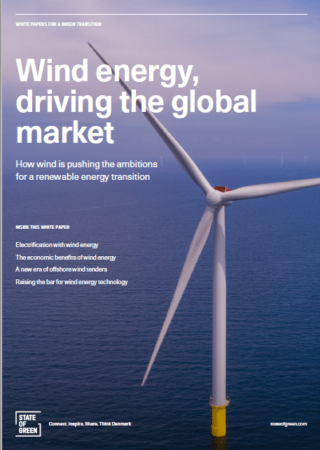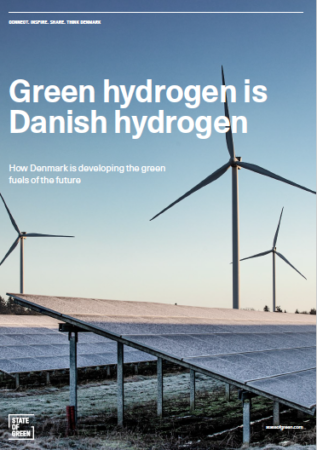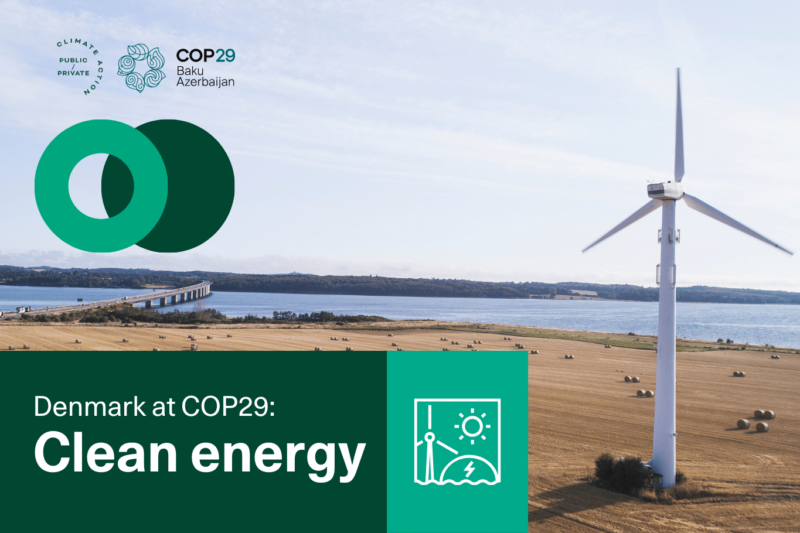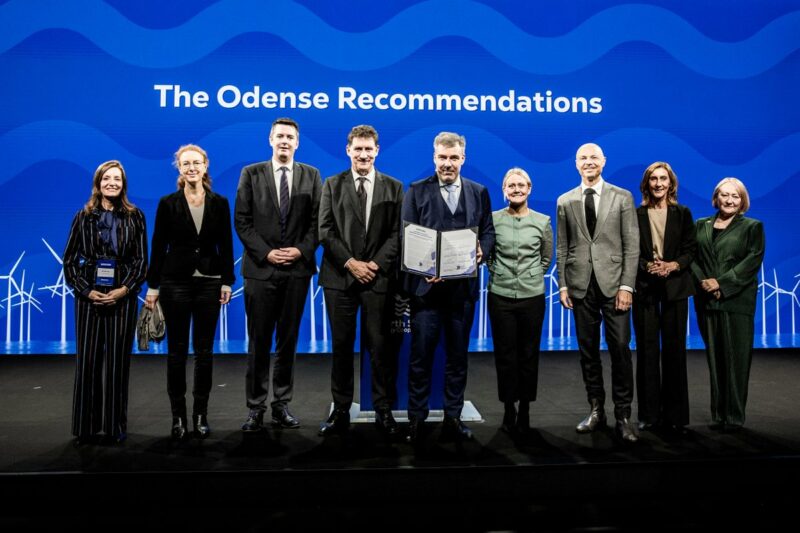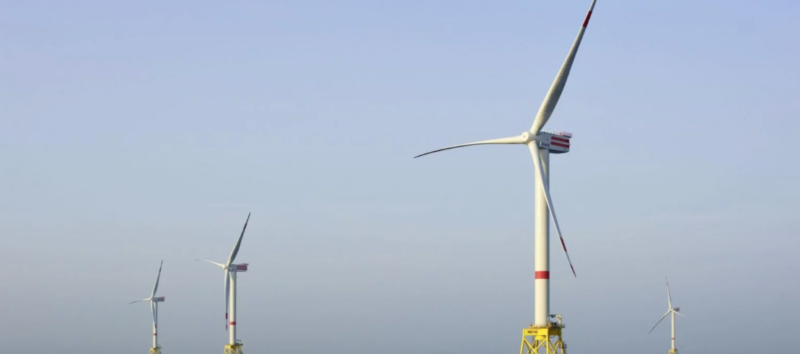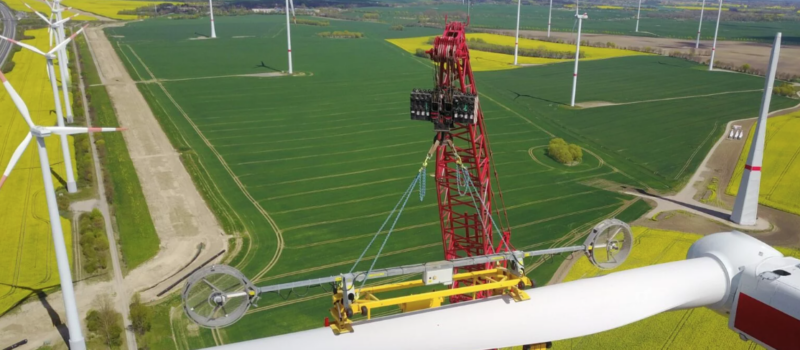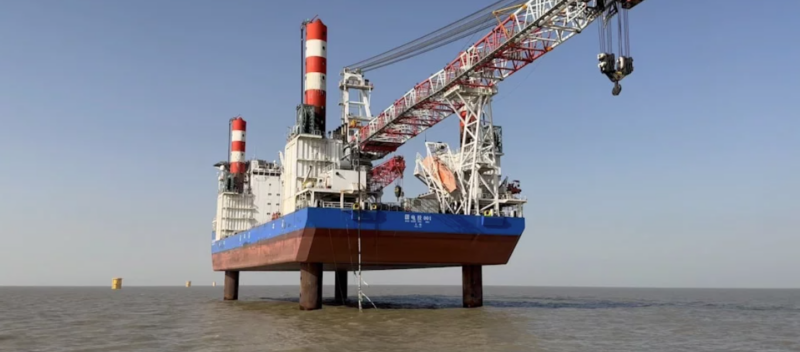News
Offshore wind
Wind farm planning and development
Wind research and development
+1
10 Examples of Successful Wind Energy Solutions


1. 1,000% wind energy
A strong wind blows across the north-western part of the Jutland peninsula, and many wind turbines, solar cells and local CHP plants cover the equivalent of several hundred per cent of the annual electricity consumption. Jysk Energi operates the distribution company NOE Net and is co-owner of the supply network company Vestjyske Net 60 kV. Together, they supply approx. 430 GWh of electricity to their customers. Local electricity production is around 935 GWh. During windy weekends, the distributor sends off more than ten times the local consumption to other parts of the country. At NOE Net, wind turbines, CHP plants and solar cells cover more than 1,000% of the local electricity consumption over shorter periods. Wind turbine capacity alone is close to 400 MW, and with 7-8 large wind turbine and solar cell projects in 2017 and 2018 – including Vesterhav Nord at 170 MW in the North Sea – capacity will increase to 700 MW (Courtesy: Jysk Energi)
2. Energy park harvests energy from wind and sun
In Nørhede-Hjortmose, close to the North Sea, 22 3.3 MW Vestas turbines and 69,000 solar cell panels produce plenty of electricity for the grid. Private investors have installed 72 MW of wind energy and 15.2 MW of solar cells, contributing to the local municipality’s goal to become 100% self-sufficient in green heating and electricity by 2020. Thanks in part to the wind turbines and solar cells, the residents and businesses of the municipality have already reached an estimated coverage of 60%.“Yes, it is a truly spectacular park. The solar cells are installed between the wind turbines and do not bother anyone”, says technical manager Per Nielsen of RAH, who is responsible for the combined network and connection of the solar cells to the 10 kV grid. The consumption of electricity in RAH’s supply area is almost 60,000 MWh per year. Local production of electricity from wind turbines, solar cells and CHP plants amount to approx. 90,000 MWh per year and thus since 2014, the RAH area has been an exporter of green energy. (Courtesy: RAH Service)
3. Test scheme in Nissum Bredning
The global wind market players continuously seek opportunities to develop offshore test projects, which potentially reduce production costs of electricity from offshore wind farms and keep offshore wind energy costs competitive. In July 2015, the Danish Energy Agency published a call for applications for tests of new technologies to establish and operate wind energy production offshore. Turbines in the test scheme receive a Contract For Differences of approx. EUR 0.09/kWh (DKK 0.7/kWh) for approx. 11 years and then market price until decommissioning. Based on minimum criteria, such as technical and financial capacity to ensure the potential for development and the commercial perspective of the test elements, the aid was granted to I/S Nissum Bredning Vind for their 28 MW test project in February 2016. The project’s main test elements are a Siemens Wind Power 7 MW wind turbine, a new Siemens Wind Power designed concept of gravity jacket foundation and concrete transition piece, a slender tower concept, 66 kV cables and a switchgear solution. (Courtesy: Nissum Bredning Vind I/S, Jysk Energi A.m.b.a., Siemens Wind Power A/S).
Where global wind giants come to test
Learn about the public-private partnership at the heart of the Danish wind energy success story.
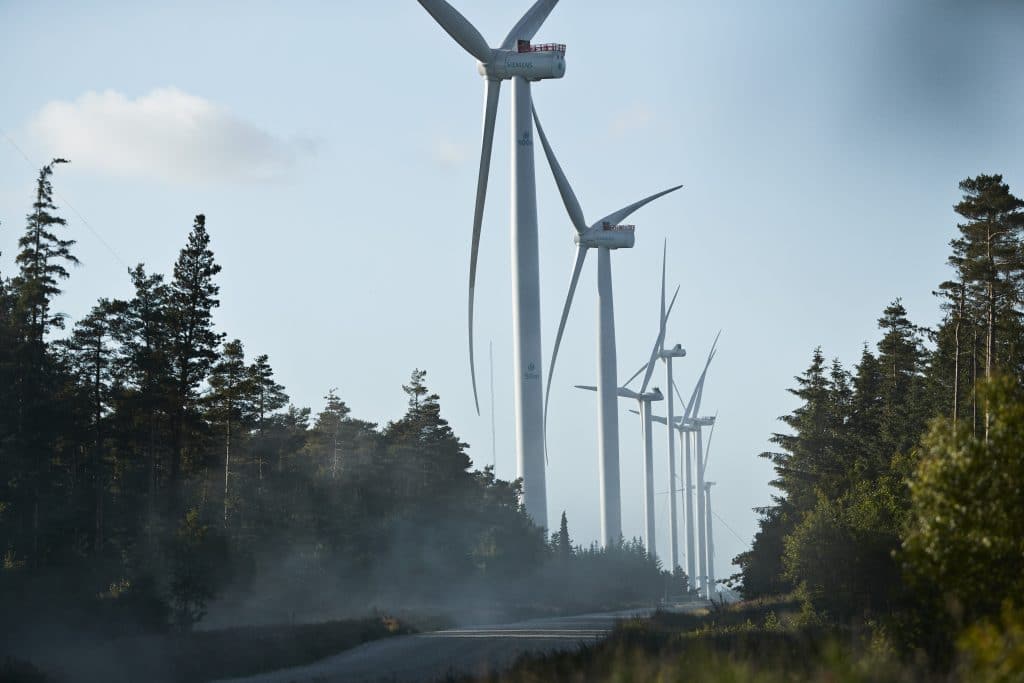
4. Østerild – where the sky is the limit
Testing wind turbines is key to developing new wind energy solutions. The largest turbines are designed for a life offshore. However, testing of offshore turbines often has to take place onshore, and there is no better place to do this than somewhere with relentless and rough winds. The world’s largest test centre for large wind turbines is located in Østerild, Denmark. The test centre has room for seven turbines with a maximum height of 250 metres and a capacity of 16 MW. Today, the rural area is home to prototype wind turbines from wind turbine manufacturers from around the world. In close collaboration with the wind turbine manufacturers, the Technical University of Denmark (DTU) is leading the research at Østerild. At the same time, DTU shares the story of wind energy with the 50,000 visitors that make their way to the impressive test centre each year. In the coming years, the test centre will be expanded in order to be able to test even taller wind turbines before they are installed offshore. (Courtesy: Technical University of Denmark – DTU)
Read the latest news on how Østerild is used to discover the wind energy solutions of tomorrow.
5. Giant wind turbine blade captures more energy from the wind
Offshore wind energy is envisioned to play a significant role in the delivery of clean, renewable energy in the future and the cost is constantly reduced. Offshore wind projects coming online today are already delivering power at almost half the price of those finished in 2012 due to increased competition and larger turbines and components. A good example of that is the 88.4-metre blade for offshore application, introduced by LM Wind Power in June 2016. The giant blade is based on a newly developed carbon-glass hybrid technology and has been designed, manufactured and tested to last for 25 years of life offshore, in the harshest weather conditions and roughest seas. One wind turbine with 88.4 metres blades can generate enough electricity to power 10,000 European homes. Facts:
- Length: 88.4 metres
- Weight: 34 tons
- Tip speed: 300 km/h
- Manufactured by LM Wind Power in Lunderskov, Denmark in June 2016.
(Courtesy: LM Wind Power).
6. Historically low bid for offshore wind farm
In November 2016, Vattenfall won the tender to build Kriegers Flak, which at 600 MW will become Denmark’s largest offshore wind farm. The tender price of EUR 49.9/MWh (DKK 372/MWh) also makes Kriegers Flak the cheapest offshore wind project to date. The low price reflects a more mature market for offshore wind energy, with an increasing number of players entering the market, enhancing competition. Furthermore, flexibility and a simple, proven process in the tender procedure handled by the Danish Energy Agency contributed to the success of the low-priced winning bid. The last years have seen a significant cost decrease in offshore wind energy technologies and this has drastically lowered the tender prices from EUR 141/MWh (DKK 1,048/MWh) in the Anholt tender in 2010 to Kriegers Flak EUR 49.9/MWh (DKK 372/MWh) in 2016. By 2021, Kriegers Flak will generate electricity corresponding to the annual consumption of more than 600,000 households – equivalent to 23% of all households in Denmark. (Courtesy: Vattenfall Vindkraft)
7. Wind turbine cooperatives – citizens as co-owners
With the commissioning of a new onshore wind project in Copenhagen in 2014, the wind turbine cooperative Prøvestenens Vindmøllelaug was formed. The project consists of three 2 MW turbines of which one is owned by private citizens through the cooperative and two are owned by the Danish utility company HOFOR. HOFOR developed and initially financed the project and then offered 33% of the shares to locals in a preferential option to purchase. Wind turbine cooperatives have existed in Denmark for decades. According to the Danish Act on Renewable Energy it is mandatory to offer at least 20% of the ownership in new onshore and nearshore wind farms to local citizens. The ownership is usually offered as shares of approx. 1,000 kWh in annual production. The purpose of this provision is to promote local acceptance from neighbours to wind farms through co-ownership and in the case of Prøvestenens Vindmøllelaug, the cooperative consists of 4,055 shares owned by 516 shareholders. Each year, the board of the cooperative is elected at the annual general meeting and the cooperative idea is that one share equals one vote. (Courtesy: HOFOR, Prøvestenens Vindmøllelaug)
8. Hornsea Project One
With a capacity of 1.2 GW, Hornsea Project One will be the world’s first offshore wind farm to exceed 1 GW in capacity and become – by a considerable margin – the world’s largest offshore wind farm. It will be capable of powering well over 1 million UK homes when operational in 2020. Hornsea Project One is located 120 kilometres off the Yorkshire coast and the project will span a total area of approx. 407 km2. The project will use 7 MW wind turbines each with a height of 190 metres – larger than the Gherkin building in London. As part of the project, DONG Energy will construct the longest ever offshore high voltage AC electrical system. The system will take the clean electricity produced by the wind turbines, transmit it to shore and then feed it into the national grid. This system includes more than 900 kilometres of cables. Hornsea Project One will mark yet another milestone for offshore wind as a utility-scale, domestic source of renewable energy. And importantly, offshore wind can bring economic revitalisation to coastal areas and create thousands of jobs in construction, manufacturing and operations. (Courtesy: DONG Energy)
Green hydrogen is Danish hydrogen
This white paper provides a very brief overview of the Danish hydrogen sector, upcoming projects and Danish capabilities.
Download publication
9. The world’s most powerful turbine
With an aim to drive down the cost of offshore wind while increasing the energy output per turbine, MHI Vestas Offshore Wind has brought its V164-8.0 MW to market. The nacelle is 20 metres long, 8 metres wide and 8 metres high. Each blade is 80 metres long and weighs more than 35 tonnes. The prototype, located at the Østerild National Test Centre for Large Wind Turbines, broke the energy generation record for a commercially available offshore wind turbine in December 2016 by producing 216,000 kWh over a 24-hour period. MHI Vestas has now uprated the 8 MW wind turbine, enabling it to reach 9 MW at specific site conditions. The increased production will add value to projects and save on Capital Expenditure (CAPEX) costs, as fewer turbines are needed to meet park capacity. In April 2016, the first two commercial 8 MW turbines were commissioned in an onshore project at Made in Denmark. The 258 MW Burbo Bank Extension offshore project in Northwest England, developed by the Danish utility company DONG Energy, is the world’s first offshore wind park (32 turbines) to fully comprise the record-breaking 8 MW platform. (Courtesy: MHI Vestas Offshore Wind)
10. Challenging the known wind concepts
In cooperation with the Technical University of Denmark, Vestas has installed a concept demonstrator turbine to test the technical feasibility to operate and control a multi-rotor turbine. The test turbine has four refurbished 225 kW nacelles instead of one with a total of 12 blades. In July 2016, the turbine produced its first kWh and this was an important step in the monitoring and testing phase. With the test turbine, Vestas is challenging the scaling rules, which imply that turbines have to grow in size to increase their energy output. The aim is to lower the levelised cost of energy (LCOE) of wind as well as address transport and installation challenges in some markets. Many new load and control features will need to be developed, tested, and proven to assess the technical and eventually the commercial feasibility of the concept, and first after a successful demonstration will Vestas know more about the possible use of the technologies. (Courtesy: Vestas Wind Systems).
